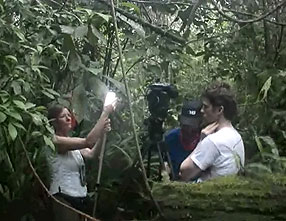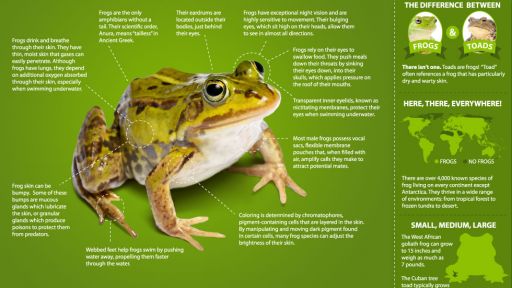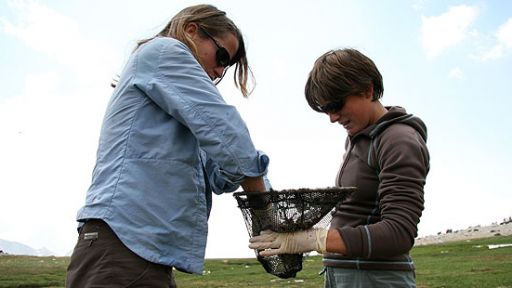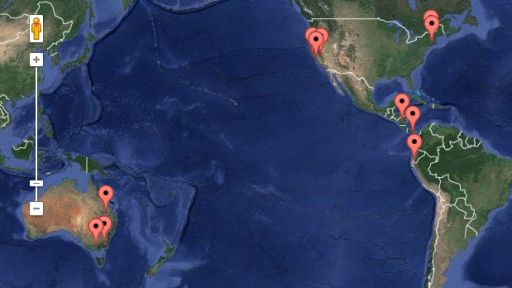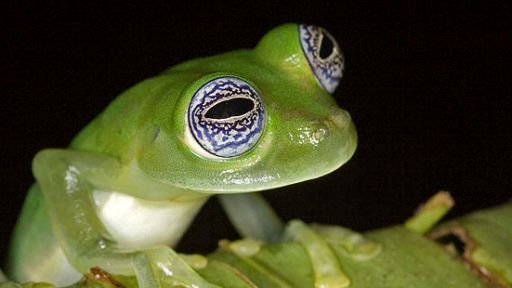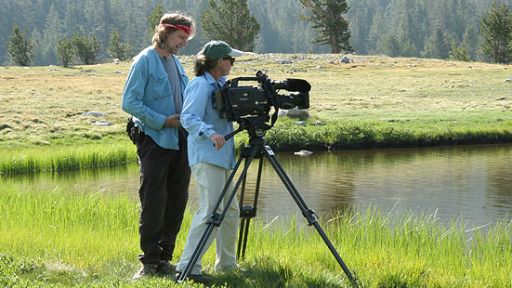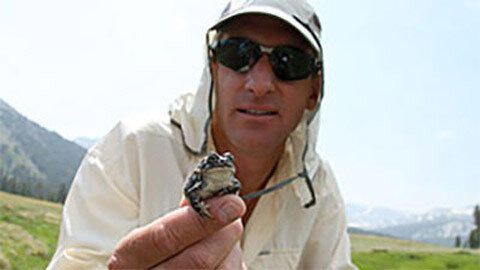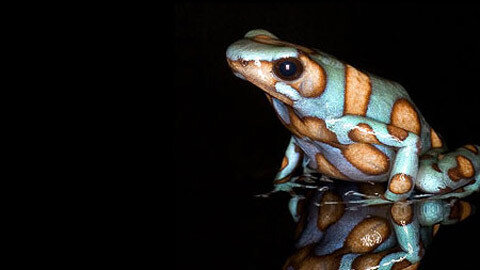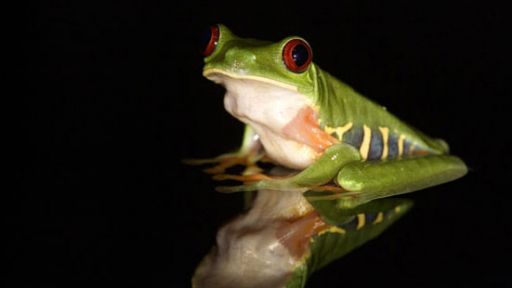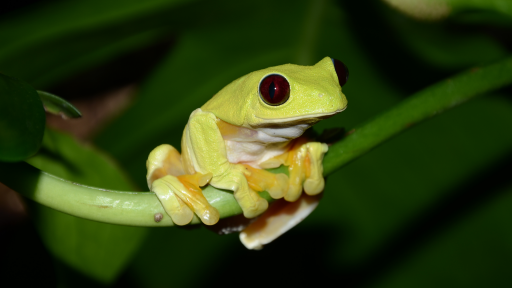Filmmaker Allison Argo shares her stories from the making of Frogs: The Thin Green Line.
We set off for Panama on the 4th of June for our first shoot. It promised to be a challenging one: most frogs are nocturnal and they’re most active when it’s raining… The crew consisted of myself (producer/director/chief bottle washer), Andy Young (cinematographer extraordinaire), Josh Otte (sound recordist), and Ryan Killackey (a biologist/filmmaker who was invaluable in helping us find the various species). We were armed with umbrellas, tarps, backpacks, rubber boots, and battery-powered lights. We had to hustle to get down there while it was still the rainy season (the season when frogs breed). When we arrived, the rains were still strong and the frogs were out in full voice, calling through the nights. Here’s an entry from my journal:
Notes from the field 6/19/08
I’d forgotten why filming frogs is so grueling… They like the rain, the dark of night, and they’re masters of camouflage. Tiptoeing into their world is a colossal challenge. You can’t shoot without light – but frogs don’t like the light. And lights (and film equipment) don’t like the rain. It’s a bit of a Catch-22. We’ve spent the past two weeks, slipping and sliding along steep, muddy jungle trails in hopes of capturing at least a bit of the magic of the frogs’ rainforest realm. Our bodies are covered with insect bites and strange fungi that have sprouted in an environment that never dries out.Still, how extraordinary it is when you finally do manage to steal into the frogs’ world! We’ve witnessed first hand how difficult it is for amphibians to survive. A few nights ago we filmed a frog couple breeding. It was an enormous labor that lasted from dusk until dawn. The zealous couple was almost attacked by a lizard and more than one snake came dangerously close, but they managed to elude the nocturnal predators. Two days later we trekked back through the forest to shoot more footage of the eggs they’d laid – only to find that they’ve been destroyed by maggots. It’s shocking to see what a miniscule number of tadpoles ever make it to adulthood.
Yesterday we were filming along a creek when we got caught in a major storm. The skies suddenly opened and the rain was torrential. The creek rose in a flash, and we lost some of our gear. I’m relieved we weren’t swept away – and that the most important equipment escaped unscathed. Unfortunately our back-up camera got submerged so we won’t have any more behind-the-scenes footage. It’s disappointing, but we’re lucky the damage wasn’t worse.
It’s proven tricky to capture frogs calling on camera. You can’t see them without some sort of light – but the moment you shine one their way, they clam up. We’ve gradually gotten the hang of it: turn your light on to focus the camera, then sit in the dark and wait for them to start calling again. If you time it right, you can roll the camera, snap on the light and get one good chirp before they go silent again. There have been a lot of long nights, but somehow the magic of the forest and the frogs infuse you with energy to work through the fatigue…
Biologist Karen Lips is conducting surveys in the same forest, and the second day we were here she led us to a very special egg clutch. It was being guarded by the father(!) – a glass frog. We were absolutely spell-bound. Apparently, this father watches his young night and day for weeks until the tadpoles hatch from their eggs and drop to the stream below. For well over a week we’ve visited “daddy” (as we call him) to check on the progress of his eggs. And then, yesterday, wasps started circling his egg mass. He sprang to action and warded them off with head jabs and kicks. It was phenomenal. The wasps moved on to an easier target – an egg clutch on a neighboring leaf. This species doesn’t guard its young, and so the tadpoles had no protection… But when the wasps began to attack, the tadpoles were able to hatch prematurely and drop to the stream below. It was extraordinary to watch them swim away… I couldn’t have invented such behavior in my wildest dreams, much less imagine we’d be lucky enough to shoot it!
I’m just so happy the gear has held up. It’s always hard to shoot in the jungle, but the nocturnal, water-loving nature of frogs adds one more layer. We’ve been plagued by fogged-up lenses and mold mushrooming in the equipment cases, but we’re managing to keep the gear running… and with perseverance (and very little sleep), we’re capturing some compelling tales from the realm of the frog. I’m itching to get into the edit room, so that I can piece together these rainforest battles that few people ever get to witness. …Despite the challenges, I have to admit, I’m more smitten with frogs than ever.
The remainder of our shoot in Panama was more sobering. We shot in a beautiful cloud forest reserve where the amphibian fungus, chytrid, has wiped out all the frogs. It was wrenching to walk through that silent forest -– to think of all the frogs like “daddy” who have fallen victim to the killer fungus. Many of them were found nowhere else on earth. Now, we’ve lost them forever…
Our last Panamanian locale was EVACC -– the El Valle Amphibian Conservation Center. It’s here that frogs from the neighboring forest were evacuated three years ago when chytrid was moving in. Today these beautiful animals live in little glass tanks. The dream is that someday these frogs will be returned to their forest once we’ve learned how to control chytrid in the environment – but their forest is rapidly being cleared for development. Construction of villas for foreigners are felling the trees and clogging the streams with run-off. Another heart-breaking reality –- even in the rainforest…
Check back tomorrow for the story behind our next shoot, a little closer to home: Yosemite National Park.
– Allison Argo

